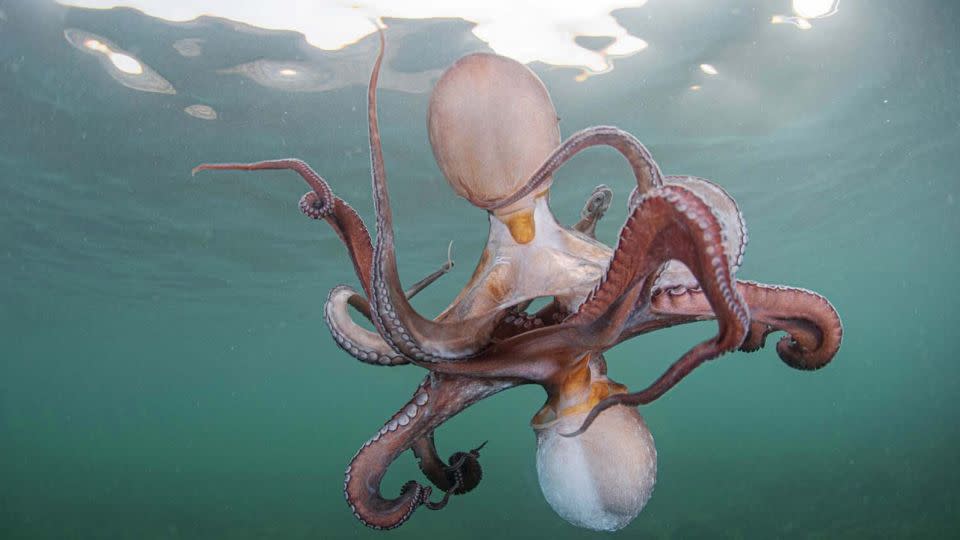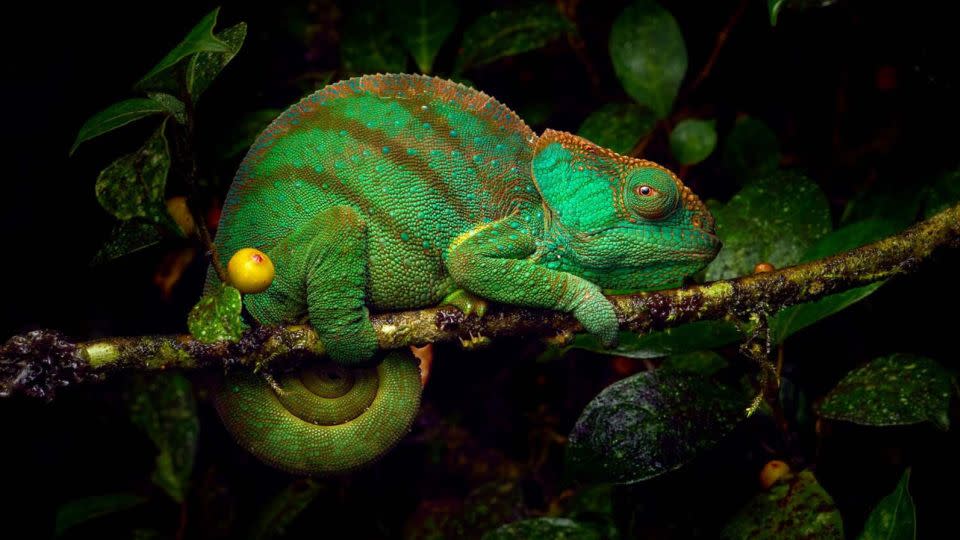Caring stink bugs and tangled octopuses: European Wildlife Photographer of the Year 2023
Editor’s Note: Call to Earth is a CNN editorial series committed to reporting on the environmental challenges facing our planet, together with the solutions. Rolex’s Perpetual Planet initiative has partnered with CNN to drive awareness and education around key sustainability issues and to inspire positive action.
To the naked eye not much happens on tree branches in the depths of our forests. But a closer look through a camera lens can tell a different story — one of motherly love.
That’s exactly what was captured by the overall winner of the 2023 European Wildlife Photographer of the Year award. The photo taken by biologist Javier Aznar González De Rueda shows with incredible detail a female stink bug shielding her eggs and newly hatched larvae.
The maternal behavior was observed by Aznar in Ecuador’s Yasuní National Park, a dense jungle that is the country’s largest protected area.
The Spanish photographer explained that the mother’s protection is crucial for improving her offspring’s chances of survival, with a whole host of predators waiting nearby. “This is a highly complex ecosystem with countless organisms in a vast interconnected web of life,” he said in a press release.
Various insects are known as stink bugs, named for their unpleasant smell, but the ones photographed by Aznar go by the scientific name antiteuchus tripterus, and are found in South and Central America, with the most common habitat being southern Brazil. They are roughly 14 milimeters in length and at most 2 centimeters in width, but Aznar was able to show them up close and personal.
Entries to the competition, which is run by the German Society for Nature Photography, were submitted by photographers from 42 countries and prizes were awarded for categories including birds, mammals, landscapes and the underwater world.

Describing the judging process, jury member Mark Littlejohn said in a statement: “Recent studies have found that the rate of species extinction in insects is eight times higher than in mammals, birds and reptiles. And yet the world as we know it would not exist without insects.
“With this in mind, the long, hard task of selecting one winner out of 18,000 entries was surprisingly easy.”

Sabine Riewenherm, president of the German Federal Agency for Nature Conservation and patron of the competition, said that increasing awareness of insects can help protect them. In an introductory note to the competition, she added: “Nature photography in its traditional form … sparks emotions. And emotions play an important role in nature conservation.
“They stimulate interest in species, habitats and the interconnectedness of nature as well as increasing awareness for nature conservation.”
For more CNN news and newsletters create an account at CNN.com

